Ask Ethan # 44: what came first - supermassive black holes or galaxies?
You need to be optimistic - hope that several new measurement results will open up new territories for theorists.
Jim Peebles
The reader asks:
what appeared earlier, black holes in the center of spiral galaxies, or the galaxies themselves?
Recently, we have considered the largest and smallest black holes of the Universe, and this gives us the opportunity to consider the order in which different structures were formed in the Universe. This is what the Universe looks like on a large scale:
')
At the moment, the Universe contains from several hundred billion to a trillion galaxies, whose masses range from 0.01% of the Milky Way to 1000 masses of our galaxy. The clusters are located in a spiderlike cosmic structure, it has superclusters and intersections of filaments, and huge empty spaces the size of tens of millions of light years. The visible part of the universe stretches 46 billion light-years in all directions from us.
But this was not always the case - not even close to it. At the very beginning everything was homogeneous. Only after billions of years passed, did the universe begin to resemble its current form.
It is important to imagine the Universe on a large scale in order to correctly answer the question about black holes - although these topics may seem unrelated at first glance.
Why?
Because if we ask ourselves the question, what came first, the black hole, or the galaxy in which it later formed, then we actually ask: did the Universe evolve from small structures to large ones, or vice versa?

For decades, the debate on this topic has been conducted mainly by American and Soviet scientists. The first preferred approach from the bottom up, the second - from top to bottom. What is the difference:
From bottom to top: the universe began with strong fluctuations on a small scale, and not on a large one. Too dense regions grew with time, led to the appearance of clots that grew, merged and clustered together, to then grow into large galaxies and clusters. In this scenario, black holes formed the first, together with large groups of stars, and only much later they grew into what became galaxies.
From top to bottom: the universe began with strong fluctuations on large scales, not small ones. Too dense and large regions experienced gravitational collapses, and turned from uneven ellipsoids into pancakes, which turned into galaxies. Later, the galaxies evolved and grew black holes in their centers. In this scenario, the galaxies were formed first.
For a long time there was no evidence of which approach was correct.
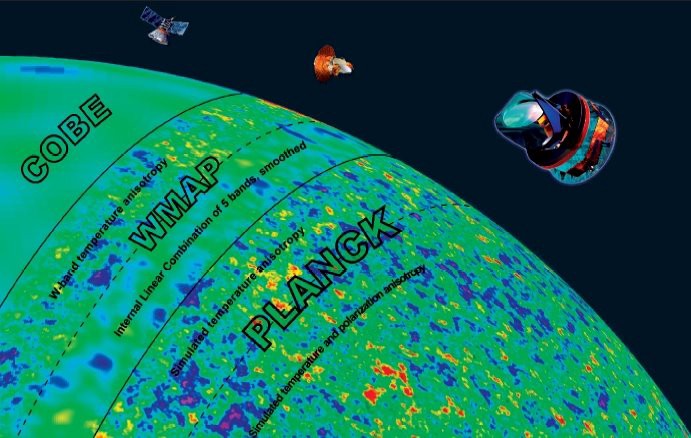
Everything began to change when we discovered and began to measure the residual glow of the Big Bang, which gave us a lot of information about both the early Universe and the current structure. You probably know that the Universe consists mainly of dark energy and dark matter, and that only a few percent are ordinary matter, and the radiation, or photon energy, is generally 0.01%.
We know this from a combination of evidence, mainly from background microwave radiation, observations of large-scale structures, and measurements of the Universe at large distances.
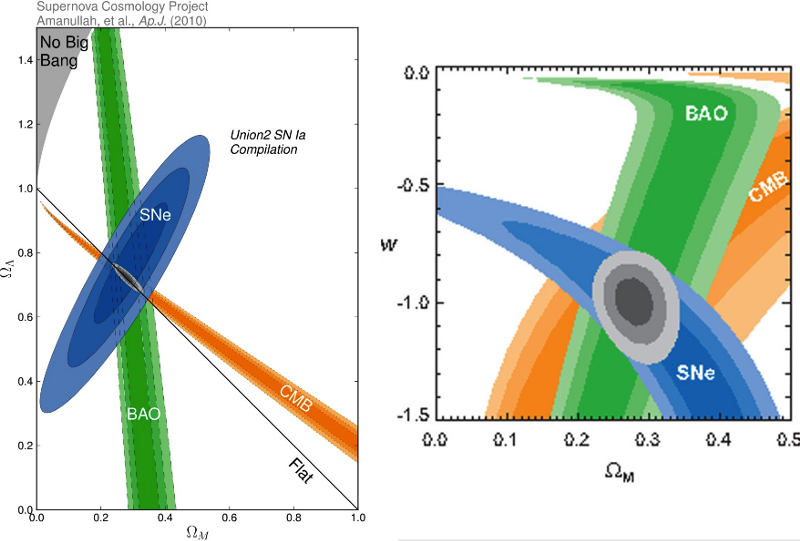
It shows the different energy components of the universe. This information is very important for understanding its evolution. But we also, having studied the structure of the Universe on a large scale (thanks to the BAO method, or baryon acoustic oscillations, and microwave background radiation), we can learn about the scales and strength of the initial fluctuations of the Universe.
Did they happen on a large scale, small scale, or occurred simultaneously? And with what force? What part of them comes from the gravitational and electromagnetic interactions that have occurred since the Big Bang, and how were they initially distributed? Microwave background radiation can tell a lot about all this.
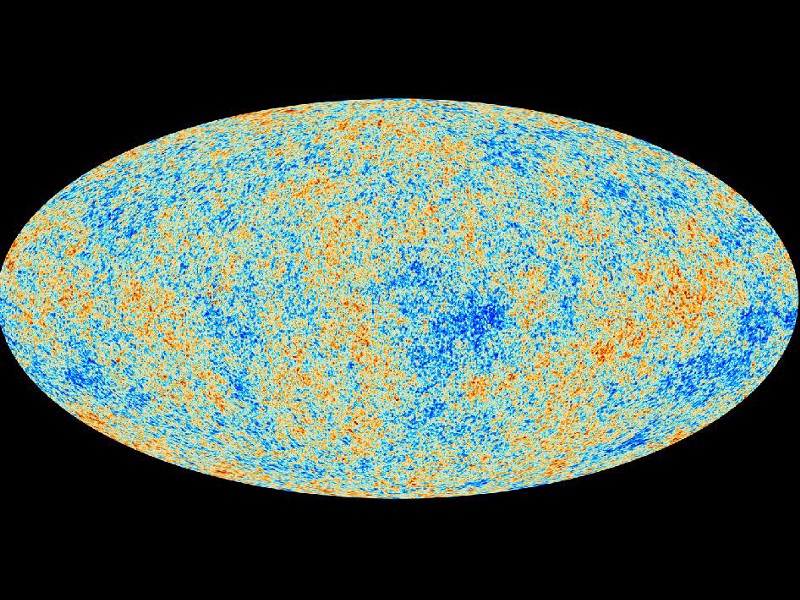
In particular, the initial pattern of distribution of fluctuations was invariant with respect to scales — that is, fluctuations of approximately equal force occurred on all scales, both large and small. The distribution of oscillations on the right side of the graph (picture below) became so because of the interaction of dark and ordinary matter with radiation, which occurred under the influence of gravity.
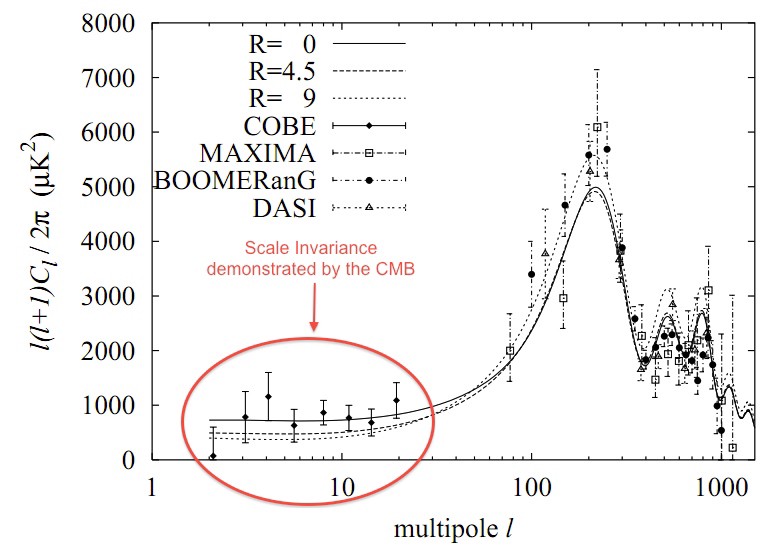
But it is the left flat part of the graph, corresponding to a large scale, that shows the absence of a slope of the curve. From this it follows that, in combination with the data of the right part of the graph, it can be concluded that the Universe was born with fluctuations of approximately equal strength on both large and small scales. This has been known for about 15 years. The latest data from the WMAP and Planck projects only confirmed the emerging picture.
You can decide, after reading all this, that the answer to the question remains unknown. But there is another part of the clue that tells about the formation of structures in the Universe - and it, perhaps, gives us the answer. Despite the fact that the prerequisites of structures exist on all scales, and contribute to this, the development of events “from top to bottom” does not play a special role due to the fact that the speed of propagation of gravity in the Universe is finite.
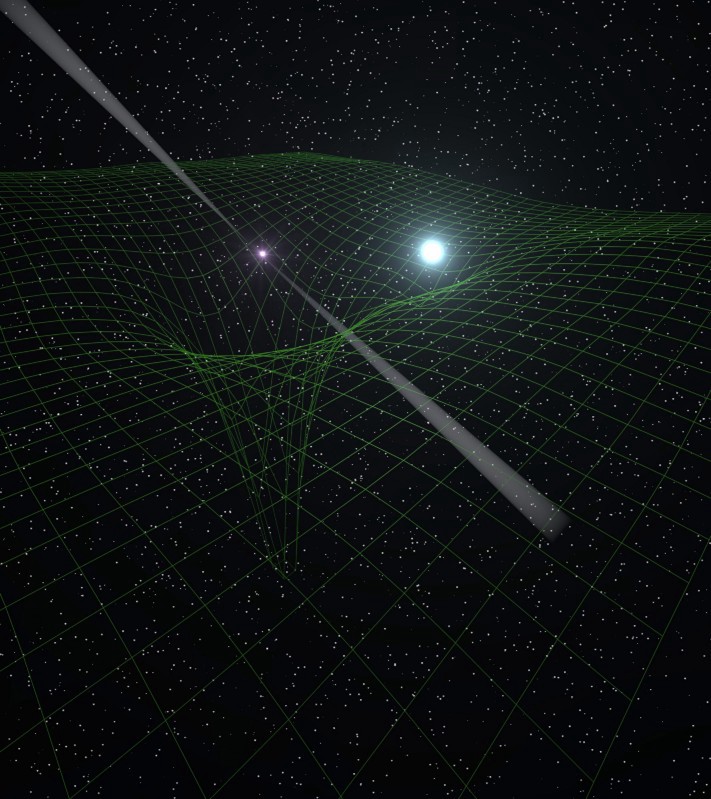
Regions with a high density on a small scale can begin to attract additional matter rather quickly, since gravity propagates at the speed of light. On the other hand, structures on a large scale cannot change quickly - those that are tens of millions of light-years long must wait tens of millions of years to feel the force of gravity.
In other words, both scenarios, from the top down, and from the bottom up, play a role - but the script from the bottom up, being relatively small, gets a head start in millions of years. And the first stars in the universe began to form no later than 100 million years after the Big Bang.
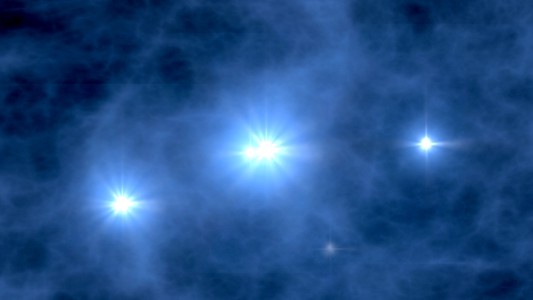
Among these stars of type "population III", the first stars formed in the Universe from the original hydrogen and helium, there will be massive ones that will turn into the first black holes in the Universe. And this process does not change with time - when a large cluster of new stars appears, the hardest ones (the brightest, blue and hot ones) will all end up in a catastrophe, and their cores will collapse into black holes. In the most extreme cases, these stars can have masses hundreds of times greater than the sun's, and as a result generate very large black holes only a few million years after their appearance.
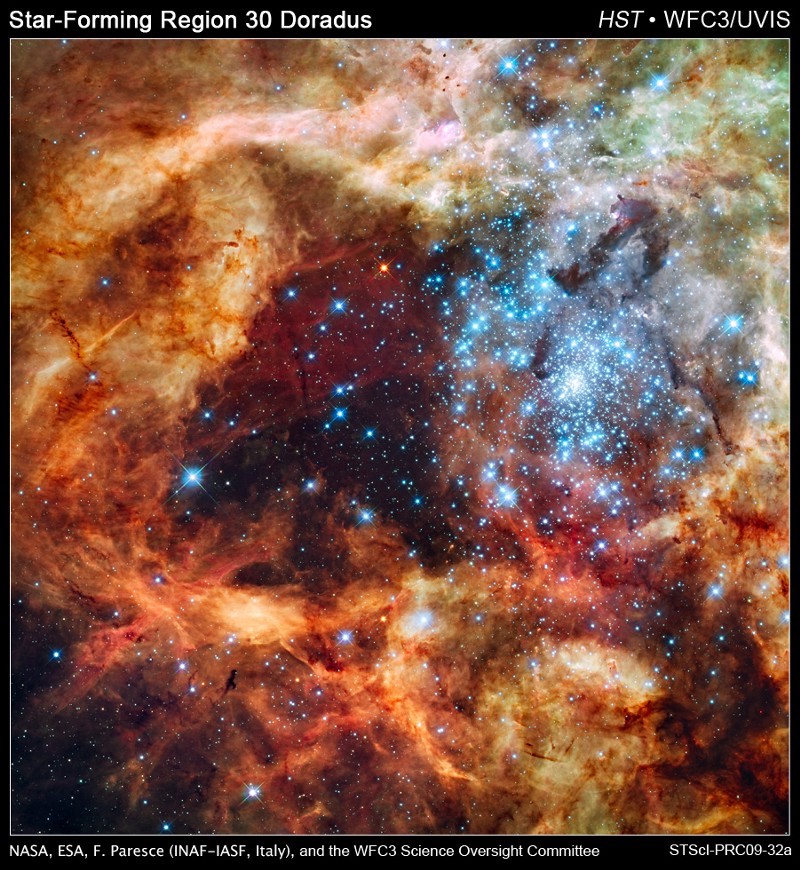
So, as far as we know, stars and black holes first formed in the universe, and then galaxies appeared around them by combining these small regions. Over time, they grew into supermassive black holes and large galaxies that we are now seeing. But this required initial fluctuations that are comparable in power to both large and small scales.
This means that the best answer to the question is that the embryos of supermassive black holes and galaxies first formed, and this happened at about the same time. But these black holes were initially quite large, and managed to grow to thousands of solar masses before their environment could be called galaxies. And it turns out that black holes formed at first - but in those regions that after the merger turned into galaxies.
Source: https://habr.com/ru/post/368799/
All Articles